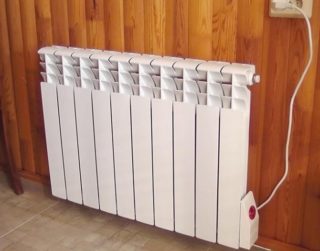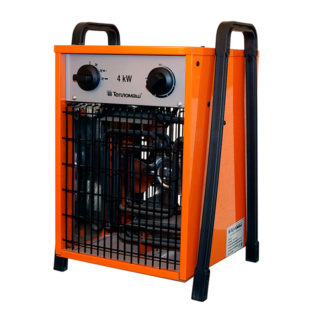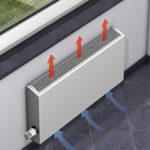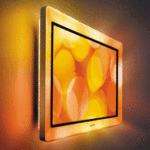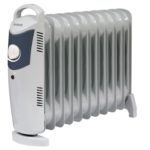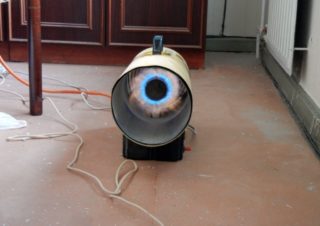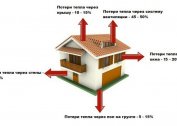There are many ways to heat a house. Any type of heating equipment has attractive sides and cons. To achieve maximum economic effect, you need to very well calculate what heat transfer is sufficient to maintain a comfortable temperature in the room. Many people prefer to install electric batteries - such a system is easier to mount, the price per kilowatt is comparable to the price of gas or solid fuel.
The advantages of electric batteries for heating a private house
There are at least seven reasons to pay attention to a heating system assembled from elements operating on current:
- Simplicity of the project - no special skills are needed to attach the electric radiator to the wall and plug it into a power outlet. There are no additional elements, only high-quality wiring is needed.
- Environmental friendliness - during the operation of the device there is no emission of harmful substances, the combustion process does not occur.
- A wide selection of heaters - the homeowner can choose the best option for his area, the quality of wall insulation, other criteria.
- Modern units are equipped with electronic control systems and work in tandem with thermostats or the Smart Home system.
- Electric heating for the population is subject to special reduced tariffs, which allow additional savings.
- Almost all batteries warm up quickly; you do not need to wait long for the room to be warm.
- The appearance of convectors is highly decorative and fits perfectly into any home interior.
The gradual transition to alternative and renewable sources of electric energy predictably leads to a reduction in the cost of the latter.
Varieties of batteries
There are several categories of radiators and convectors operating from the network:
- Liquid type devices - they transfer heat from the heating heater to the surrounding space through a special oil or ordinary water.
- Devices of direct impact on the air - they have an open heating coil that heats the masses in contact with it.
- Electric batteries for home infrared exposure - also have a spiral that emits a heat flux that transfers temperature directly to the object that it is aimed at.
All other species are interpretations of these three categories.
Fan-type electric radiators
The basis is a convector, supplemented by an engine with an impeller. The latter forcibly blows heated air into the room, passing it through a hot spiral. Most often, the unit has the form of a pipe mounted on legs in an inclined position to the horizontal.
Household types have an average consumption of up to 2 kW, industrial designs are designed for 5, 6 kW and above. Such units are able in a short time to heat pretty decent areas.
Oil type radiator
An electric radiator for a home is usually equipped with a base with wheels, it has scattering ribs and a hollow structure, which is filled with special oil, where a heating heater is installed. The control panel of the device contains keys to turn on the heater, and may also have a knob for regulating the temperature sensor. More advanced systems are equipped with electronics.
Products are designed for power from 500 W and above. Oil heaters have a certain amount of inertia in their work - they require a certain amount of time to warm up the working fluid, but due to slow cooling they can heat the room longer even when the power is turned off.
Convector heater
Convector-type equipment at the base has several nichrome spirals installed in a metal leakproof casing. The latter is equipped with gratings from below and above, contributing to the free passage of air masses through the device. Heated oxygen rises to the ceiling of the room, and the cooled goes down. In the room where convector type heating is installed, there is intense movement of heat flows.
Wall-mounted electric heating radiators have a capacity of up to several kilowatts and are quick heating devices. The design does not provide elements with high heat capacity, so when the device is turned off, it cools very quickly.
Infrared heaters
Such equipment is produced in the form of panels of rectangular, square shape or special heating films. The effect is based on the principle of transfer of thermal radiation by the type of solar radiation. Special spirals, burning red hot, transmit a wave to those objects that are in their area of effect. A feature of infrared heaters is the ability to create a sensation of heat immediately after turning it on.
Infrared films can be laid as a warm floor directly under the surface of linoleum or laminate.
The most important thing when choosing a radiator or convector is that its power is enough to create a comfortable temperature in the house. Heaters can be used as main devices or auxiliary. In the first case, for a standard room with a ceiling no higher than 2700 cm, the power per one square of the area should be 100 watts of energy consumed. If we take electricity as an additional source of heat - enough power of 80 watts per square.
- Convector
- Infrared radiator
- Oil radiator
Safety precautions
According to the safety requirements for the operation of electric convectors, you need:
- Install them no closer than 0.5 cm from the wall.
- Do not allow the socket with the wire to touch the hot surfaces of the heater.
- Use equipment with open nichrome spirals only in a room where children do not have access to them.
- Supply voltage to the heater exclusively through powerful sockets.
- Do not cover the heating devices with material, do not put furniture and other things close to them.
Do not ignore these recommendations. Otherwise, the equipment may quickly fail or cause a fire.
Manufacturers of the best batteries on electricity
Among reliable models, it is possible to note such heating elements:
- STIEBEL ELTRON CON - convectors of the German manufacturer for one, one and a half and two kilowatts.
- Electrolux - high-quality Swedish oil radiators with high safety and wide functionality.
- Noirot - infrared heaters manufactured in France. They are characterized by a high degree of electrical protection, can be used in damp rooms, and are safe for unattended work.
Electrical heating systems should only be installed by qualified personnel.
